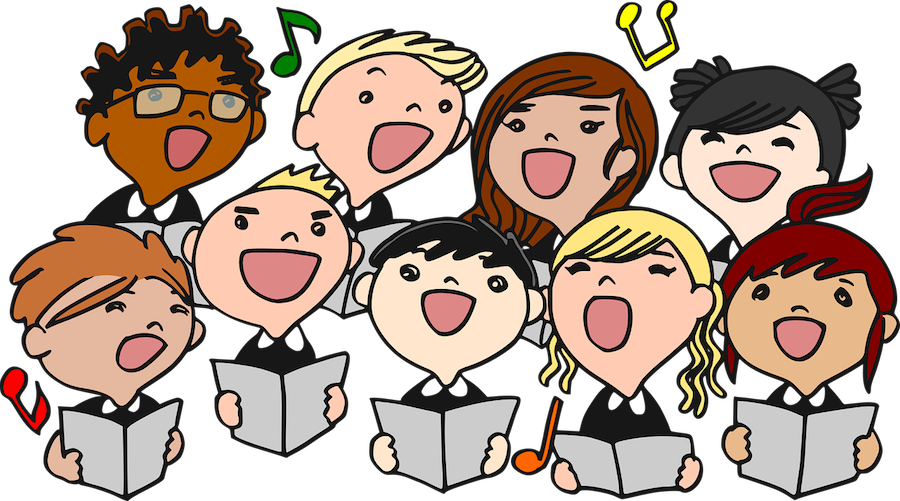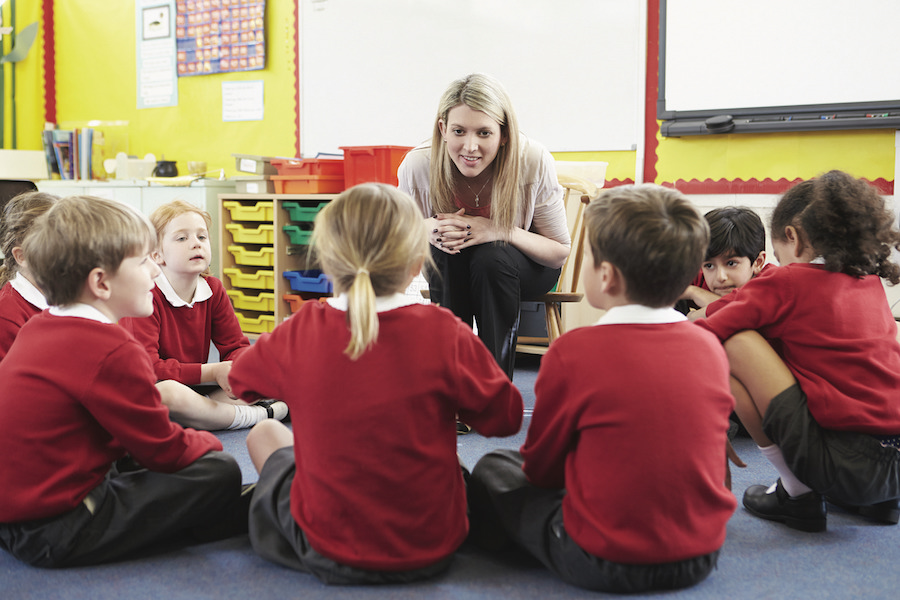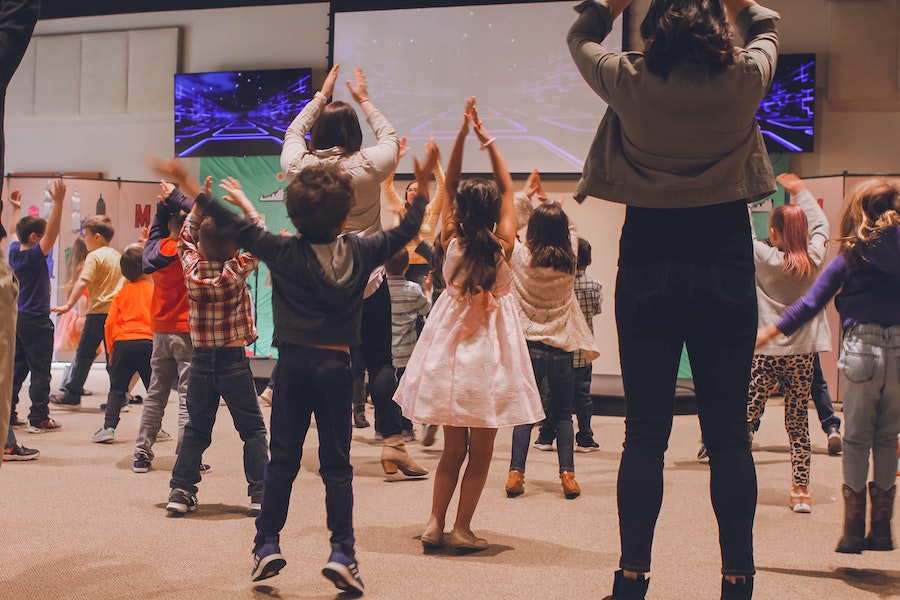Can We Sing ... Or Not? RSS

Can We or Can't We?
If you follow social media posts on music and music education, you will know that the phrase trending at the present time of writing (August 2020) is, ‘Can we sing, or not?’. This is an attempt to bring together and cross-reference the various threads of guidance. Do be aware that the official government guidance may vary between England, Northern Ireland, Scotland and Wales.
The overall GOV.UK guidance for education from EYFS through to KS3, updated 28 August 2020, certainly includes music:
The curriculum should remain broad, so that the majority of pupils are taught a full range of subjects over the year, including sciences, humanities, the arts, physical education/sport, religious education and relationships and health education.
Here is the government guidance in respect of music specifically in primary, secondary (including sixth forms), infant, junior, middle, upper, school-based nurseries and boarding schools, accessed 29 August 2020:
All pupils should have access to a quality arts education. Music, dance and drama build confidence and help children live happier, more enriched lives, and discover the joy of expressing themselves. There may, however, be an additional risk of infection in environments where singing, chanting, playing wind or brass instruments, dance and drama takes place. Additional mitigations, such as extended social distancing, were previously required for singing, and playing of wind and brass instruments given concerns that these were potentially higher risk activities. Department for Culture, Media and Sport (DCMS) has commissioned further scientific studies to be carried out to develop the scientific evidence on these activities, which has allowed the government to reconsider appropriate mitigations and further research is continuing.
Considerations for singing - Although singing [and playing wind and brass instruments] do not currently appear to represent a significantly higher risk than routine speaking and breathing at the same volume, there is now some evidence that additional risk can build from aerosol transmission with volume and with the combined numbers of individuals within a confined space. This is particularly evident for singing and shouting, but with appropriate safety mitigation and consideration, singing, wind and brass teaching can still take place.
Group size - Singing, wind and brass playing should not take place in larger groups such as choirs and ensembles, or assemblies unless significant space, natural airflow (at least 10l/s/person for all present, including audiences) and strict social distancing and mitigation as described below can be maintained.
Social distancing - In the smaller groups where these activities can take place, schools should observe strict social distancing between each singer and player, and between singers and players, and any other people such as conductors, other musicians, or accompanists. Current guidance is that if the activity is face-to-face and without mitigating actions, 2 metres is appropriate.
Seating positions - Pupils should be positioned back-to-back or side-to-side when playing or singing (rather than face-to-face) whenever possible. Position wind and brass players so that the air from their instrument does not blow into another player.
Two points to note:
- Note that the previous guidance to limit numbers for singing to up to 15 has now disappeared but, at the time of writing (29 August 2020), this advice remains in place in the section on Holiday, After-school and Out-of-school Clubs.
- GOV.UK states within this section that: Singing, wind and brass instrument playing can be undertaken in line with this and other guidance, in particular guidance provided by the Department for Digital, Culture, Media & Sport for professionals and non-professionals, available at Working safely during coronavirus (COVID-19): performing arts. That document was last updated on 13 August 2020.
Ventilation
The government expects independent schools to follow the control measures in the same way as state-funded schools and the guidance also covers expectations for children with special educational needs and disability (SEND), including those with education, health and care plans, in mainstream schools.
Early Years, Further Education & Special Needs
Separate guidance is available at GOV.UK for early years, further education colleges and for special schools, applying to early years children in settings other than school-based nurseries, to further education colleges and to special schools separate from mainstream settings. The difficulties inherent in social distancing for early years children are acknowledged and the original guidance was for singing and chanting games to be used as ways of welcoming children back to nursery. However, the current statement regarding music in this section is simply:
There may need to be changes to some subjects, such as PE and music, so that schools can teach these subjects as safely as possible (acccessed 29 August 2020).
A Way Forward for Teachers & Learners
Younger children - early years and primary school children will probably miss out most on the full experience of singing and chanting with gusto. Teachers of young children are experts in general childhood development and learning; few are also professional musicians so they tend to use commercially produced schemes of work for music. Early years and primary teachers are expressing concern over how to provide effective music education when the scheme they use relies heavily on singing along to recordings. The new, topic-based scheme, Music Playtime for Early Years and Key Stage 1 is a particularly good choice (in non-COVID times too) because it is based on a balanced mix of activities - listening and movement, skills and games, body percussion and use of classroom instruments, as well as songs that can easily be sung anywhere, unaccompanied.
Older students - in this technological era, older children’s study of music in the classroom setting becomes increasingly focused on the use of keyboards and music computer programmes, and singing is not necessarily a part of GCSE or A Level music. However, these students are affected in respect of extra-curricular musical activities such as choirs, bands and orchestras, which contribute to their all-round musicianship and achievement. Teachers and instrumental/vocal teachers need to refer to all of the available GOV.UK guidance as well as consulting their professional organisations such as the Incorporated Society of Musicians and the Musicians' Union.

Holiday, After-school & Out-of-school Clubs
Here is a summary of the government’s separate guidance for holiday, after-school, and out-of-school clubs. In the Holiday, After-school and Out-of-school Clubs section, GOV.UK says, with regard to singing and playing wind instruments:
Children and young people can now engage in singing, wind and brass in line with the protective measures outlined in this guidance and paying strict attention to the working safely in performing arts guidance to mitigate any cumulative risks of aerosol transmission. Although singing and playing wind and brass instruments do not present a higher risk than speaking for example, studies have indicated that there may be a cumulative risk that can build in particular contexts.
(last updated by GOV.UK on 20 August 2020, and may be due for an update)
GOV.UK states within this section that: 'Strict attention must be paid to the Working Safely in Performing Arts Guidance'.
The Holiday, After-school and Out-of-school Clubs section currently (accessed 29 August 2020) gives the following guidance:
- they are limiting the number of children singing or playing together as far as possible and ensuring that children attending are in small groups of no more than 15, with the same children each time wherever possible and at least one staff member
- children are socially distanced (2 metres apart), are outside or in a well-ventilated room
- they are not singing loudly.
The full guidance in this section additionally includes advice as regards performances which, of course, applies to schools:
- Social distancing is observed at all times whilst playing wind or brass instruments or singing (2 metres, wherever possible, or 1 metre with robust risk mitigation where 2 metres is not viable)
- Back-to-back or side-to-side positioning (rather than face-to-face) is used whenever possible
- Activities which can create aerosol are discouraged, such as shouting or singing loudly - we advise providers to use microphones where possible or encourage children to sing quietly
- Singing or playing wind or brass instruments outdoors, wherever possible
- If playing wind or brass instruments indoors or singing indoors, you should limit the number of children attending to account for ventilation of the space and the ability to social distance
- Take steps to improve ventilation as far as possible and whenever possible, either through the use of mechanical systems and/or opening windows and doors
- If hosting a performance, limit as far possible the number of performers and audience members
- Steps are taken to encourage audiences to support the overall safety of the event, including seating individuals rather than allowing them to stand (to help maintain social distancing) and the other mitigations outlined in this guidance
- Continue to take the other vital steps outlined in this guidance, including preventing unwell people from attending, maintaining cleanliness, supporting contact tracing and other mitigating measures.
Research into the Aerosol Effect of Singing
The issue has been clouded by the BBC’s irresponsible report by Lauren Moss with the headline Singing “no riskier than talking' for virus spread (20 August 2020). The research cited is problematic as a guide for teachers. It has yet to be peer-reviewed, only 25 people took part in the study and they were professional performers, the researchers state that singing or shouting at the loudest level could generate 30 times more aerosol than talking and that ventilation could affect how aerosol builds up. Young children, in particular, are only just beginning to develop their singing voices and modulating their breath and vocal control when singing is not easy to do, particularly for primary teachers who are not generally specialist musicians.
Dr Rupert Beale of the Francis Crick Institute, said
This important research suggests there is no specific excess risk of transmission due to singing. Loud speech and singing both carry excess risk however. This research supports the possibility of safe performance as long as there's appropriate social distancing and ventilation.
Dr Julian Tang of the University of Leicester stated
The risks should not be overly underestimated or played down because of this [study].
So - can we sing or not?
Following a balanced programme of music that includes a wide range of activities for young children, and keeping older students on track with their music studies are vitally important. Music lessons can optionally include quiet singing and humming, and there are lots of worthwhile musical activities that do not involve singing. Things can and do change, new research appears, and perhaps the government will update their information again tomorrow. Right now, deciding to follow the official guidance appropriate to your own country is the only responsible option for keeping teachers, children and their families that bit safer.
